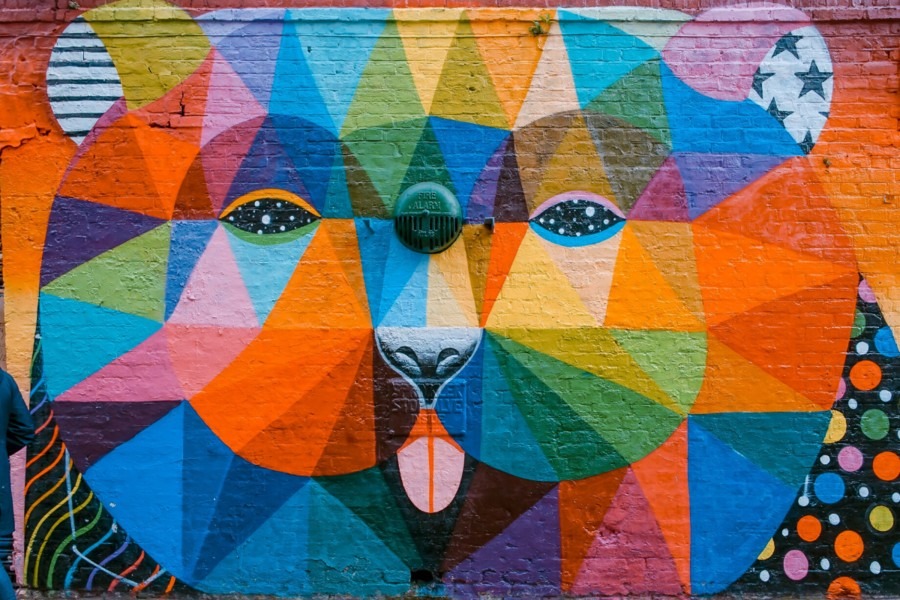Jan 02, 2019
Any marketer or business owner who values conversion will understand that adding a shadow or adjusting a background has an effect on the final conversion and sales.
Colors play a hugely important role in this. Colors evoke emotions, convey subliminal messages and have a great impact on our decision-making process. So as an entrepreneur or marketer, it is hugely important to master the psychological power of color.


A recent study by Kissmetrics found that 84.7% of consumers cite color as the main reason they buy a particular product and that they read ads in color 42% more than the same ads in black and white.
Those are tremendously powerful numbers! And it shows that color is not a basic element you can just skip.
In this article, we analyze primary colors in marketing so that you can also understand their psychological power and applications in the real world.
Primary colors or base colors are the first layer on the color wheel and the building blocks for every other color. So it makes sense to start with these colors:
Red is a color that dominates. It has tremendous psychological and physical effects on viewers and is widely used in marketing. We associate it with two of our most powerful psychological triggers:
Red can be used to represent romance, love and sexuality, as well as aggression, blood and evil. It is these triggers that make red such a powerful attention-getter.
The power to attract the eye is also increasing. The red carpet is a good example.
The color has also been proven to have physical effects, increasing blood circulation, breathing rates and even metabolism. That increase in metabolism actually causes hunger and is one of the reasons most fast food chains and restaurants have red their in branding and promotions.
Red's ability to attract attention and create relevance makes it an attractive proposition, but because of its dominant nature, you must use it sparingly.
The color is perfect for short-term, irregular promotions such as sales and deals. The next time you walk down the shopping street, look for a store with a sign in the window. Bet the sign is red. If you want to use this, I recommend you do it the same way.
Yellow is an interesting color. It can have different effects depending on the shade. Light and bright yellow evoke happiness. They trigger thoughts of summer, sunshine and warmth. Its psychological effects activate optimism and positivity.
However, the same shade of pale yellow can also serve as a warning. Road signs and "danger" are good examples.
Darker yellow like gold, creates a sense of wealth, importance and antiquity, which is particularly useful for brands trying to aim for the top end of the market.
Yellow's ability to create optimism and happiness is a powerful stimulus in campaigns that seek to create energy and show playfulness.
It is a striking color and brands that use it are instantly recognizable.
The alert feeling that light yellow triggers is useful for making reminders. Brands like Post-It have used that link to build their profile in a very broad, unprotected market.
It is also used this way by the world's largest online retailer, Amazon. There it is used as an "Add to Cart" button. Their investment in conversion optimization proves that yellow really can have a powerful effect on purchase decisions.
Dark yellow, especially on a black background, is often used by brands trying to create a luxury look around their promotion.
Blue is the Internet's favorite color, and there's a good reason for that. Blue is the most commonly used color on the worldwide web because it exudes confidence, calm and honesty.
Blue is also incredibly versatile. The lighter shades are vibrant, eye-catching and fresh, with obvious connections to crystal clear seas and summer skies. Those brighter blue variations also have refreshing effects, making it the perfect backdrop for a whole range of different businesses.
We associate dark shades of blue with security and confidence, making them the perfect choice for banks, finance and other similar, professional industries.
Blue is an excellent choice for any brand that sells so-called blackbox products. A blackbox product is something that cannot be seen or touched, think banking, software, security or marketing services.
As a color of confidence, it is also an excellent choice for health-related campaigns. Think about the toothpaste in your bathroom, does it contain their branding blue? Oral-B, Aquafresh, Sensodyne, all feature blue in their branding. The same goes for many other niches that sell health and fitness products.
Thanks to its strong ties to security and trust, dark blue becomes a great option for companies trading in professional sectors.
Despite all its useful uses, blue does not work well in the food industry. Few natural foods contain blue and, as a result, the color has no connection to food, hunger or nutrition. If you sell food products, stay away from blue.
In other words, blue should not be underestimated when used in your marketing campaigns. It has strong, psychological effects that clearly refer to buying decisions. If you want to increase trust, use blue (with white) on your landing pages.
Did you enjoy this blog post and would like us to take a look at secondary colors as well? Let us know!
We use cookies on our website to provide you with the most relevant experience and personalized ads by remembering your preferences and repeat visits. By clicking "accept all," you consent to the use of all cookies. However, you can also go to "Settings" to give controlled consent.